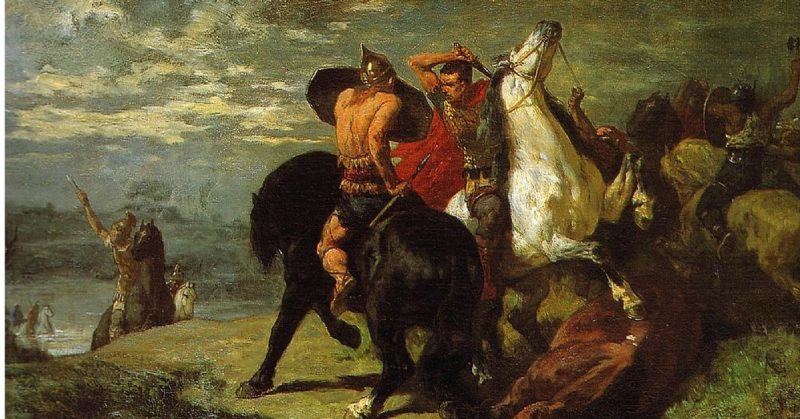The Roman invasion of Gaul was one of the most significant wars in the ancient world. It saw Rome’s empire vastly expand, propelled Julius Caesar to political dominance, and started the process that ended the Roman Republic. It was a hard-fought war between two very different cultures.
Here are some facts you might not know about this critical conflict.
Driven by Roman Politics
The most powerful motive behind the invasion was not trouble with the Gauls. It was the state of Roman politics.
The expansion of the Roman Empire had led to great wealth and power for a small faction of the elite. Competition for wealth and status was fierce. Some politicians used their assets and fame to mobilize the commoners to support them, but this was costly.
Foreign wars were the best way to gain fame and riches; Julius Caesar was looking for an excuse to lead a war.
Disillusioned Soldiers
The Roman army had evolved over the previous generations. It was no longer a volunteer part of the social elite. Instead, most legionaries were peasant farmers temporarily turning their hands to professional soldiering. Being away from home meant leaving their farms to decline.
The senatorial class that ruled Rome had not acknowledged the sacrifice these men were making or rewarded them adequately for their efforts. The soldiers were disillusioned and turned to their generals as political leaders. Their loyalty was to men like Caesar, not the politicians at home.
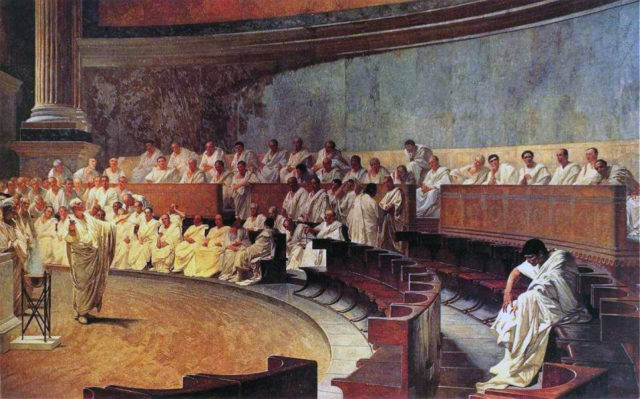
Caesar’s Story
Almost everything we know about the Gallic Wars comes from Caesar himself. A clever propagandist, he sent regular reports back home, emphasizing his achievements and ignoring his setbacks. His De Bello Gallico (Gallic Wars) is the most detailed remaining account of wars from ancient Europe. A lot can be learned about the wars, but they are seen through the filter of Caesar’s biases.
Rome Already Owned Part of Gaul
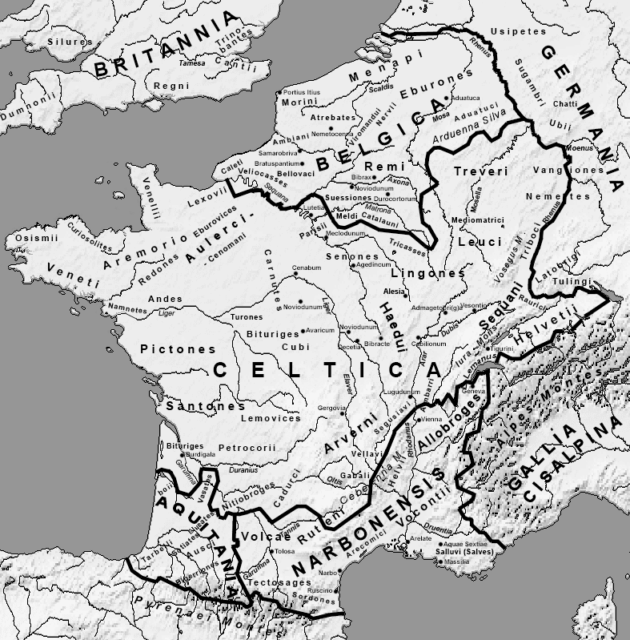
The Romans had already conquered tracts of Gallic land. They made up two provinces – Cisalpine Gaul (northern Italy) and Transalpine Gaul (southern France). It was Caesar’s governorship of these provinces that provided the chance for him to launch a war.
Roman Influence Was Everywhere
As with many other conquests, such as the Norman invasion of England, the culture of the invaders was already influential in the lands they attacked. Trade had spread Greek and Roman culture throughout much of the area. Many of the most powerful Gauls were merchants who looked kindly upon Rome making it easy for Caesar to play the tribes off against one another.
Swiss Tribes Created the Cause for War
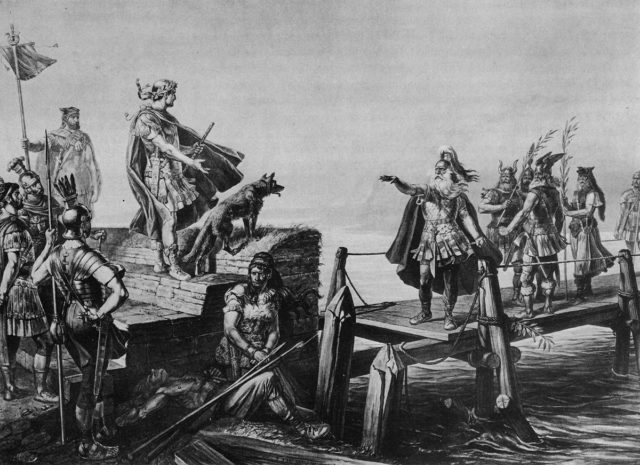
Caesar was looking for an excuse to fight. The casus belli he found was the migration of the Helvetii.
The Helvetii were a group of tribes living in what is now Switzerland. War and migration from the east drove them out of their lands. As they migrated west into Gaul, they crossed Roman territory. It was the excuse Caesar needed to start a fight.
Different Ways of Fighting
The Gauls and Romans fought in very different ways.
The Romans were highly disciplined, fighting in tightly packed infantry formations with light auxiliary cavalry on the wings. With their short swords, they were at their most effective when pressed close together so they could stab their opponents up close. They used javelins to soften the enemy up before this.
The Gauls, on the other hand, fought in loose formations where individual skill and courage mattered more than collective discipline. They needed space to swing their long swords in scything arcs. Their cavalry were elite men with the wealth to buy horses, saddles, and armor, making them a useful tool for a shock attack.
Even among the Gauls, there were differences in approach. Some, especially the larger tribes and alliances, favored pitched battle as a chance to break the Romans. Others preferred hit-and-run raids in keeping with their traditional style; what we would now call guerrilla warfare.
Close Call Against the Nervii
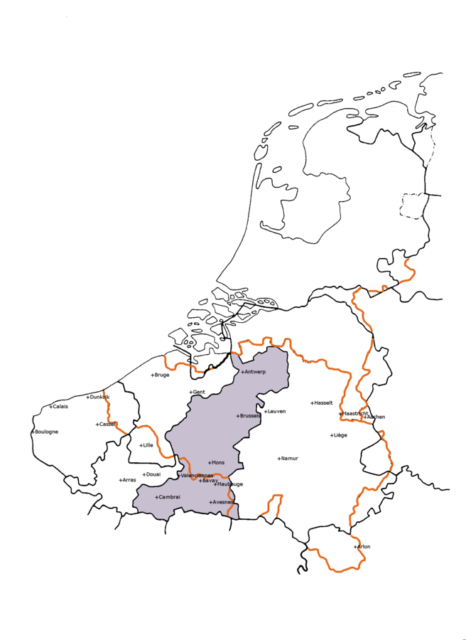
The Romans came close to defeat at times in the early campaigns. Perhaps the closest was when they fought the Nervii and allied tribes in 57 BC.
The Romans were building a camp near the banks of the Sambre River. Not all their troops had arrived. Those who had were busy digging and building when the Nervii attacked.
The cavalry of the two armies engaged each other, with the Romans being mauled by the superior Gallic cavalry.
Meanwhile, the Roman legionaries dropped their tools and picked up their weapons, discipline and practice enabling them to form a battle line quickly. Their formations were disrupted by hedgerows, but they managed to get into order.
The Romans on the right pushed back the Nervii, advancing on their camp. On the left, they were driven back by the Gauls, who captured the Roman camp. Many officers died, and the men became too tightly pressed together, unable to operate efficiently.
Caesar himself saved the day. Joining these troops on foot, he opened up the ranks and rearranged the legionaries into defensive squares. They held off the Nervii long enough for reserves to arrive and troops to return from raiding the Nervii camp.
It had been a close call. Both Caesar and his army could have been lost that day, giving the Gauls victory. His courage and clever tactics saved the Romans.
Won by Siege

The Gallic Wars were won at the Siege of Alesia in 52 BC. There, Gallic troops retreated to a defensive hilltop town. Caesar created a double ring of fortifications around it – one facing in to contain the Alesians, the other facing out to hold off relief forces. Besieged while they laid siege, the Romans held off Vercingetorix’s army when it came to assist Alesia. The town fell and with it any chance of lasting resistance.
Fighting continued for a generation after Alesia, but it was the last time the Gauls stood any chance of stopping the Romans. Vercingetorix surrendered, and Gaul was subsumed into the empire.
Source:
Kate Gilliver, Adrian Goldsworthy and Michael Whitby (2005), Rome at War: Caesar and his Legacy.
